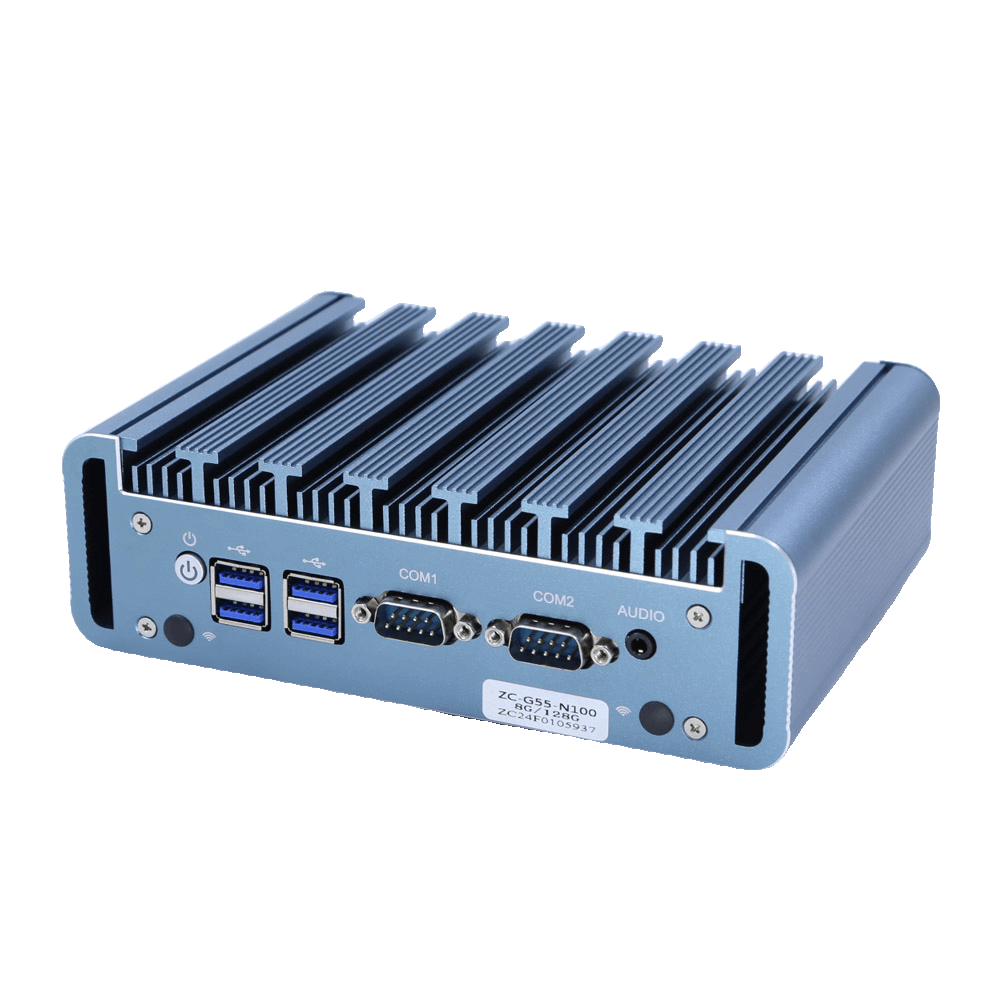Applications of embedded computer in industry
As a dedicated computer system, embedded computer, relying on advantages such as high performance, high reliability, and high flexibility, are widely used in various industrial fields, greatly promoting the development of industrial automation and intelligence. The following are the main application scenarios of embedded computer in the industry:
Industrial automation
Programmable Logic Controller (PLC) system
The PLC system is one of the most common applications of embedded computer in industrial automation. It uses specific programming languages (such as ladder diagrams) to implement logical control and scheduling, and monitors and controls various devices on the production line, including sensors, actuators, motors, etc.

Production line automation
embedded computer can precisely control assembly robots to achieve rapid and accurate installation of components. They can also monitor key parameters during the production process, ensuring product quality while reducing energy consumption. Their remote monitoring function enables more timely and efficient equipment maintenance, significantly reducing downtime and improving the automation level of industrial production and the
Automobile industry
In-vehicle Infotainment System (IVI)
Drivers and passengers can easily control relevant functions through the touch screen or physical buttons. The embedded system is responsible for processing input signals, managing multimedia content, and communicating with other electronic systems of the vehicle (such as GPS).
Advanced Driver Assistance Systems (ADAS)
Process data from various sensors such as radars, cameras, and lidars in real - time, and make quick decisions based on this data to assist the driver or take over vehicle control when necessary.
Powertrain control
By precisely controlling fuel injection, ignition timing, and transmission shifting, fuel efficiency is improved, emissions are reduced, and driving performance is enhanced.
Vehicle body electronic system
Provide user interfaces and control logic to facilitate drivers and passengers in controlling functions such as windows, door locks, lighting, and air conditioning. In addition, these systems can also be integrated with other vehicle systems (such as airbags) to provide more comprehensive body control.
Security system
It is applied to aspects such as airbag control, anti-lock braking system (ABS) and electronic stability program (ESP).
Network and communication
Manage the in - vehicle network communication, such as CAN (Controller Area Network) and LIN (Local Interconnect Network), and also be responsible for the connection with external networks, such as V2X (Vehicle - to - Everything) technology, enabling the vehicle to communicate with other vehicles, infrastructure, and the Internet.
Energy management
With the popularization of electric vehicles (EVs) and hybrid electric vehicles (HEVs), embedded computer are used to monitor and control the operation of batteries, motors, and other energy-related components.
Diagnosis and maintenance
Monitor various parameters of the vehicle in real-time, detect potential problems, and remind the driver to carry out necessary maintenance.
Industrial control
Equipment operation monitoring and control
embedded computer are responsible for monitoring the operating status of equipment, controlling the start, stop, and adjustment of equipment, and realizing the automation and intelligence of the production process. They can also collect and process various sensor data, providing real-time and accurate data support for industrial control.
Data collection and processing
Collect various data from industrial equipment in real-time, such as temperature, pressure, flow rate, etc., and process and analyze them.

